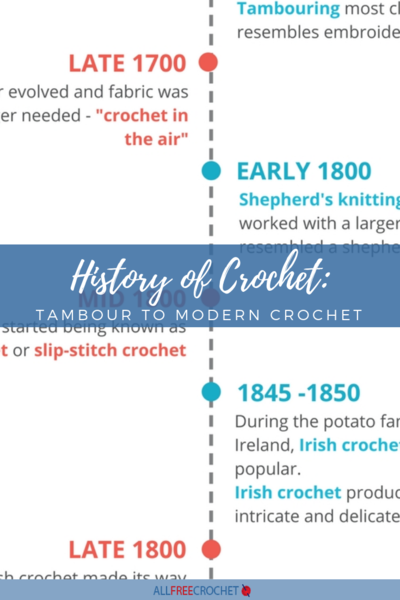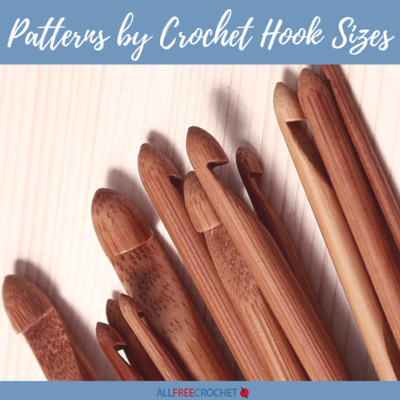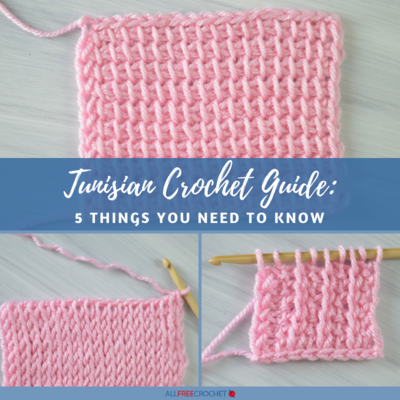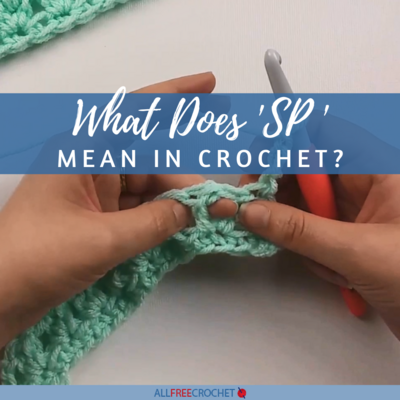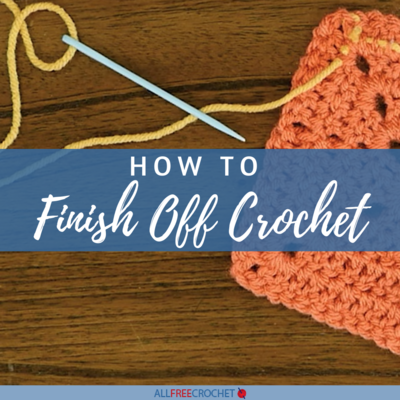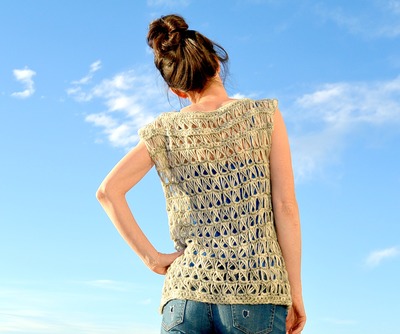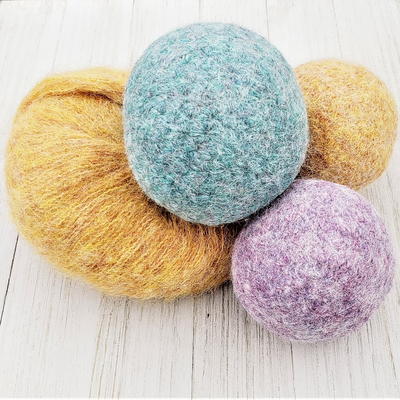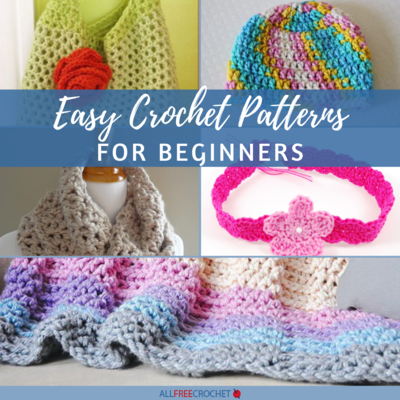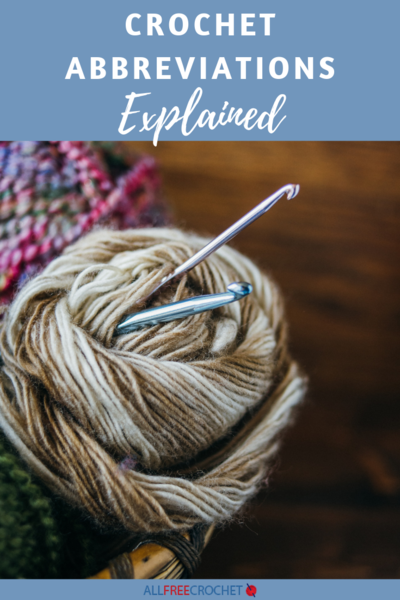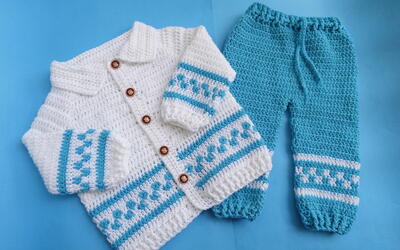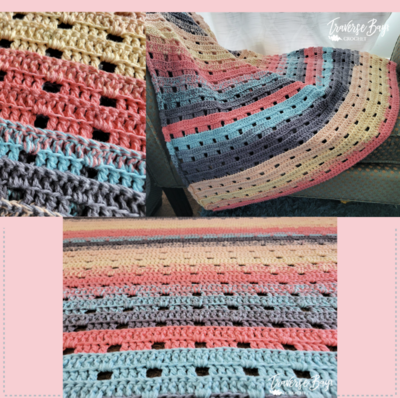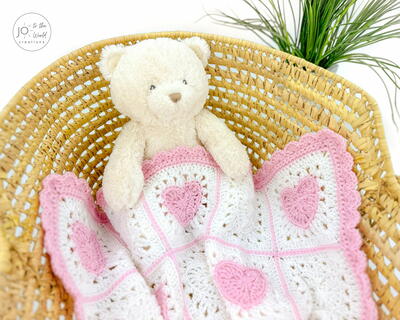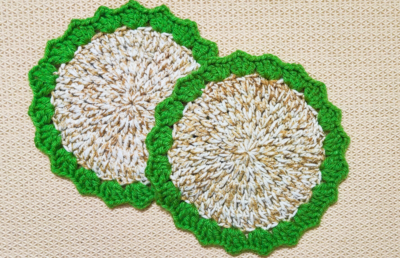History of Crochet: Tambour to Modern Crochet
Learn all about the origin of crochet and how it's evolved over the years.
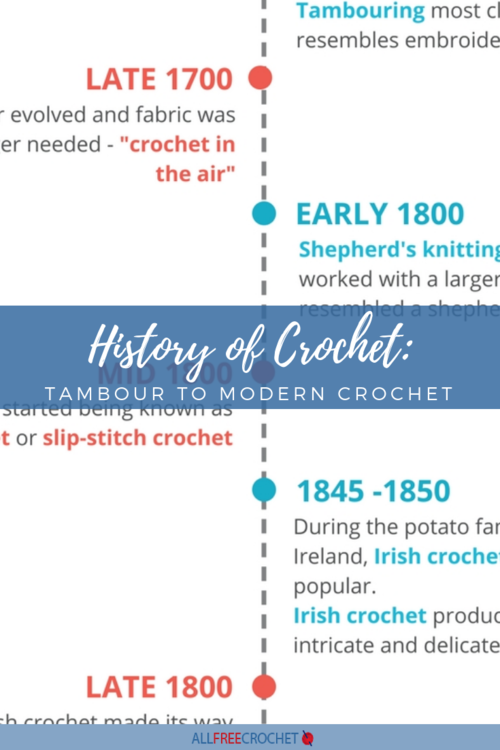
Where Did Crochet Originate?
We have all these free crochet patterns for you to make but where did it all come from? The evolution of crochet is quite the thought.
Who do we have to thank for giving us the knowledge on using a thin tool to manipulate string/yarn to form projects? Where did it all come from? What has changed from the past to today’s society?
Crochet history, like most history, isn't black and white but we do know a lot. Modern crochet has come a long way from the origins of crochet. This page, History of Crochet: From Tambour through Irish Crochet, is a brief overview that will help you understand your hobby better.
There are so many crafts in the world that are just waiting to be learned, but one of the best crafts out there is the art of crochet. Crochet does take some time to learn, and it requires practice in holding and maneuvering the hook, so be prepared to spend time learning and perfecting the craft.
Those who are just learning to crochet start out with the basic crochet stitches: single crochet, double crochet, half double crochet, and triple crochet stitches.
Once you learn the basics, you have everything you need to move on to the more advanced and different crochet stitches like the Tunisian crochet stitch, the bobble stitch, and the Shell stitch. Each of these more complex stitches builds on the very basic ones.
So, what is crochet?
Crochet is the art of creating fabric from yarn, thread, or other material strands using a crochet hook. You work yarn into loops forming a nice smooth chain and then you follow a pattern of any stitch you prefer.
The word "crochet" comes from French meaning "small hook,” which is a reference to the only tool you’ll need to work with besides your yarn. By using your hook and your yarn, you can work in rows or in rounds to work up a variety of items, from scarves and hats to blankets, cardigans, socks, and purses.
The evolution of crochet materials
Crochet has been called many names throughout history including, but not limited to, netting, knotting, needle-coiling, looped needle-netting, Tunisian crochet, Irish crochet, shepherd's knitting, lace making and tatting. Each of these techniques, among many others, is worked up with one type of hook, or needle.
Throughout the ages, many materials have been used to form fabric instead of yarn, from hair, fur and grass to hemp and flax, wool, silver and gold strands. Nowadays the most common type of “fibre” are wool, silk, cotton, linen, hemp, mohair, metallic thread and chenille.
As for crochet hooks, today we can easily find a hook made from aluminum, steel, bamboo or plastic in more than 25 different sizes, but those manufactured materials weren’t always available. People first began by using their fingers, then fashioning hooks out of bones and animal horns, metal and wood, and even out of old spoons. There is even a reference to someone during the great Irish famine (1845-1850) using a stiff wire inserted into a piece of cork or tree bark. The end was filed down and bent into a little hook to produce some fine Irish crochet.
For more on the crochet hooks of today, be sure to watch our video below!
When was crochet invented?
So how long as the art of crochet been around, then? Reality is that the history of crochet can’t narrow down exactly when it was created. According to some historians and researchers, crochet likely developed most directly from Chinese needlework, an ancient form of embroidery known in Turkey, India, Persia and North Africa.
Crochet has also been noted in the history books to have been first noticed by French nuns in France but is noted that it could be found much earlier such as 1500–1800 BC. Based on the hand technique of crochet, it’s more than likely that it is a Middle Eastern technique that has shifted over time to other civilizations.
Now, how someone knew to shape the hook and start in the first place is a mystery but what I find more interesting is how it has changed over time to today.
Back when the nuns were crocheting, they were doing very complex lacing with very fine materials like table clothes. It was considered valuable and something found in churches as part of the decor. They say only the nuns knew how to crochet and was considered part of their work.
Origin of crochet continued
Once crochet reached Europe, we know that in the 1700s and was known as "tambouring," from the French word for drum.
Tambouring bears a strong resemblance to needlework and embroidery... but with crochet stitches. To work in a tambour style, you would take a background fabric and stretch it across a frame and keep your working thread underneath that fabric. A very thin needle with a hook is inserted down through the fabric, and a loop of the thread, also very thin, is then drawn up. Keeping the loop on the hook, the hook is then inserted a little farther down into the fabric, and another loop of thread is drawn up and worked through that first loop to form a chain stitch.
By the end of the 18th century, tambour crochet evolved into a style where the background fabric was no longer needed and the stitching was worked on its own. Still using the tambour-style hook, it became known as, according to the French, "crochet in the air."
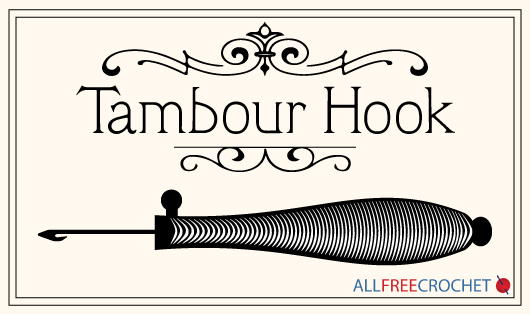
Crochet Origins: Europe
As time progresses it was noted to move to England and Scotland. Crochet took an evolution change and more people started picking up the skill. Going from the exclusivity of just nuns, it went into the hands of posh upper class. Crochet circles have been noted as a past time for upper-class ladies to perform the skills.
The project evolved from just delicate lacy patterns to something not as complex to complete but still extravagant. The poor were not privy to learning the craft. I would be willing to bet though, some fabulous posh upper lady decided to teach some of her servants which helped get the skill to be more known in the decades to come to regular people like you and me.

What is shepherd's knitting?
Crochet evolved some more and in the early 1800s a style known as shepherd's knitting appeared. Worked with a larger hook resembling a shepherd’s staff, this type of crochet uses thicker and courser yarn. It began to gain popularity in England and, in the mid-1800s, was simply called "crochet" or "slip-stitch crochet."
The strong curve and taper of the shepherd's hook made slip-stitch crochet much easier, but it was harder to make stitches that required multiple loops. After some time, hooks started to evolve to still be continuously tapered, but at a much more gradual degree so that you could hold and work multiple loops on the hook.

What is Irish crochet?
Irish crochet was developed in Ireland during the potato famine (1845 - 1850) and it quite literally saved their lives - it allowed them to work and make money without relying on their absent crops. Irish people would crochet between chores and their other work, working either outdoors in the sunlight or by the light of a candle or oil lamp at night.
The intricate and delicate fabric that Irish crochet produced was sought after abroad, so schools were formed to teach the skill and teachers were sent all over Ireland to train others. Families that survived the famine were able to save their money from crochet and work to move abroad and start a new life, bringing with them their Irish crochet skills. This style of crochet soon made its way into the crafting repertoire of American women, who couldn’t help but be influenced by the designs.
Evolution of Crochet
In the early 1900s, the skill had been evolving and again the crochet was noted to deplete again in skill level. As yarns have changed, so has the level of what you can do with the yarn. Patterns continue to simplify and many yarns have started to get much thicker and crochet hooks have been increasing in size to accommodate the new yarns selections.
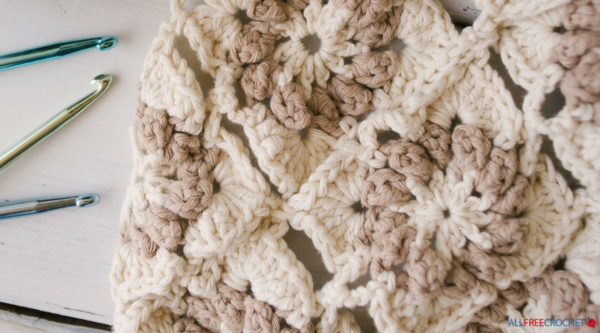
Modern Crochet in the 1900s
Modern crochet as we all know and love was invented as a way to produce a cheap substitute for traditional lace. By the 1920s and 30s, crochet started being seen as not just a decorative embellishment but as a way to make actual clothing and accessories.
In the 1940s, crochet became a huge part of the wartime efforts in the US and Britain - women at home could do their part by working up items for the troops.
In the 1960s, the crochet “boom” began and crochet homeware became increasingly popular. The granny square became increasingly popular since, as a simple design, it could be worked into so many clothing options and accessories.
What is crochet like now?
Today, after a long period of decline, crochet is seeing a revival in both interest and quality of materials. It’s now easier than ever to learn how to crochet as a beginner and to learn any type of technique you want. You can easily buy yarn of all fiber types at the store or online for quick and easy delivery.
These days, the nuns of yesteryear would be laughing at us. Our skill level is fabulous by today’s standards but would be considered primary school levels. With automation and cheap imports of products, crochet of today has become something where fewer people desire to learn because they don’t need to.
Gone is the era where you would make socks because you couldn’t afford to buy another pair. Memories of making that custom made afghan for your couch when society is perfectly contented in purchasing something mass-produced.
Very few people at home can make a crochet item and be compensated properly for the materials and time if they were to sell it. With automation has come “instant gratification”. See Now… Want Now… many people lack the desire to sit and take a few weeks or months to complete something completely original just for themselves.
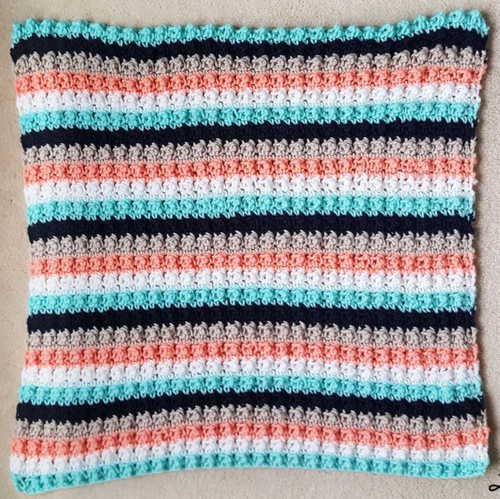
More on modern crochet
In today’s society, the most popular patterns are simple afghans, baby clothes, scarves, and socks. Usually made from thick materials such as 4 ply worsted yarns. I would conclude that to be contributed to lack of time and wanting to get projects quickly done due to either a lack of patience or the speed at which today’s society flows. The sizes of yarn today makes for the projects to grow extremely faster.
What’s to come in the future? That’s up to you… you have the power with today’s technology to get on board and learn this skill for free on the internet through well put together sites like AllFreeCrochet and The Crochet Crowd to show you how to do it. The real question... do you have the desire to take advantage of these free tutorials and patterns to create something unique and just for you.

6. Crochet History Timeline
Early 1700s: After spreading through Turkey, India, Persia, and North America, tambouring reached Europe; Tambouring most closely resembles embroidery
Late 1700s: Tambour evolved and fabric was no longer needed - "crochet in the air"
Early 1800s: Shepherd's knitting appeared. It's worked with a larger hook that resembled a shepherd's staff.
Mid 1800s: Crochet started being known as crochet or slip-stitch crochet.
1845-1850: During the potato famine in Ireland, Irish crochet became popular. Irish crochet produces intricate and delicate designs and fabric.
Late 1800s: Irish crochet made its way abroad and became a part of the crafting repertoire of American women.
1920-1930: People began seeing crochet as a way to make clothing and accessories, not just as a decorative art.
1940s: Crochet became a huge part of wartime efforts in the US and Britain.
1960s: Crochet homeware and the granny square became increasingly popular.
Today: Crochet today is seeing another revival in today's DIY culture. It's easier than ever to learn how to crochet and to purchase many different yarn and hooks.
How is knitting different from crochet?
The biggest difference between the two crafts is that crochet uses one hook and knitting uses two needles.
For crochet stitches, you only have one live stitch on the hook (unless you're working with Tunisian crochet), while a knitter keeps an entire row of stitches open (or worked) at the same time. Dropping a stitch in crochet can typically only affect that particular stitch (and maybe a few back, depending on your gauge), but in knitting, your entire open row of stitches can become affected so knitting is more delicate in that way.
Did you know you can knit via machine? Because of the way the stitches are formed, knit fabrics can be mass-produced…. But crochet can only be worked by hand due to the way you loop the yarn. Also, because of the way you loop the yarn around the hook to produce certain stitches, crochet generally uses a little more yarn than knitting.
What was your introduction to crochet?
Let us know in the comments below!
Read NextCrochet Dryer Balls
Your Recently Viewed Projects
JaneEK
Jul 31, 2018
This is a very nice article, and no, theres no way it can be as comprehensive as some crafters would like. That would be called a book instead. Im a huge history nerd, but oddly never really considered crocheted items to be actual fabrics. I do remember learning the Queen Victoria was a big proponent of handicrafts and was largely responsible for crochet and knitting being popular in England. Maybe we should lobby for a statue?
princess6860504
Jul 15, 2018
I suppose this article is not meant to be a long read, just a quick overview of where crochet came from. I don't think we should all take it so seriously. This is, as we all know, a FUN craft, and we should not take it so seriously. I actually don't really care all that much where it came from! All I know is it keeps me sane, is an outlet for my creativity and imagination, and is a great stress reliever at that!
tompatty 8331520
Jul 10, 2018
I don't believe that crochet has ever been automated, tho' some machines can do a chain stitch.
KLC
Jun 21, 2018
though it can still be expensive, I'm glad it's not still so prestigious and pricey that the average person can't give it a try. Such a fun hobby!
JaneEK
Jul 29, 2017
While I remember exactly where and when I learned to knitage 8, sitting in a mulberry tree in BermudaI cant remember ever learning to crochet. My mom crocheted as did my Dads mother. I still have some grape doilies my grandmother worked. My mother in law was an avid crocheter and crafter, and she passed down some very old and delicate bone hooks that were her grandmothers (treasures indeed!). This was a wonderful article! Makes me proud to carry on the craft, and teach it to future generations.
mydogtuddles 32143 06
Jul 22, 2017
Actually crochet began in or around bible times the fisher man did this with there nets. Before Christ according to the books that I have read. i'm a crochet teacher that is what I learned.
myti2gr 7409009
Jul 22, 2017
I started crocheting around 10 yrs old (about 39 yrs ago). I've been teaching my daughter to crochet too as well as any of her friends who want to learn.
H3L1UM
May 30, 2019
thanks, i really glad your shared that information with us, i care deeply about this, please tell me more
cattybee
Mar 15, 2016
We should also acknowledge the work of early fishermen/women. Since working with rough ropes with bare hands could be permanently damaging while making nets, they came up with large hooks to pull loops through loops...hardly the "fine, delicate work" of nuns! Many examples of net carrying and storage bags, fishing nets, floor mats, door coverings and blankets have been found dating to prehistorical eras that can be considered "crocheted"...either by bare hands or using tools. When you think of it, crochet is one of those crafts that is easy to learn but hard to master. Only now, with the internet and in-store classes -- plus a plethora of fibers and tools now available -- are we RE-LEARNING to create useful and decorative items for ourselves and those we love.
Astral Au
Mar 27, 2014
My initial thought was the article was a little too short the history of the craft even if condensed should have been perhaps x longer However the info it contained was interesting I have no qualifications in yarn craft but have had an interest and read books and online articles on the crafts as well as performing them I suppose yarn craft started with weaving at around BC Weaving like most yarn craft is thought to have been created in the Cradle of Civilisation - an area encompassing modern day Egypt Saudi Arabia Turkey Iran and neighbouring countries Middle East Central Asia Paintings pottery depicting weaving during these times allowed dating to take place Nalebinding is thought to be the precursor of both knitting crochet with articles dating to BC Macrame is thought to have come about again in the Middle East at about AD However to me the use of…Read More knots to make cloth seems to be the most straight forward and basic way to make cloth and I would not be surprised if in time the start of macrame was pushed back near to that of weaving The true time scale of knitting and crochet will be difficult to precisely date Both were very likely started as trades of a sort performed by people who didn't write and were used for daily life meaning they likely wore out The combination of orally taught process the materials of needles and hooks being wood or other degradable materials and the cloth itself being worn out means there is little left today that stretches back too far However a sock was discovered in the Middle East to have been knitted at around AD Crochet is thought to have come about sometime around It is interesting to note that this too is likely to have happened in the Middle East or Western Central Asia Turkey etc Translations into other languages and misuse of words posed an issue The Bayeux Tapestry springs to mind - created after AD it is a mixture of woven cloth with embroidery not a tapestry at all However Tambour patterns discovered from the 's confirm that Tambour was a form of lace crochet I first learned how to knit Initially I took up crochet to add simple flowers to baby girl items I knitted and medallions to baby boy items As a knitter I stumbled on to VeryPink Knits creator Staci Perry and while most of her tutes covered knitting I saw some of her crocheted items gave them a go While my crochet is now that of an advanced beginner I hope it will soon match my knitting skills which I would say are Intermediate here's hoping both leap to advanced Whatever the history may be and I do find it interesting I thoroughly enjoy knitting and crochet and would like to thank everyone who has contributed to this site and sharing their patterns which would have taken them time to create Happy hooking
kaleejon 6461095
Jul 04, 2013
Although I am grateful for the bits of information in this article, I find the author to be arrogant about our sophistication with this craft. Few people have the time to crochet as the nuns and aristocrats of the 15th to the 19th century had. Our lives are full and busy. What we crochet is what we need in these lives. Few of us have the time to create and care for the delicates laces that our ancestors did. Nor, in our busy lives do we have the need for them. Few of us live in the standard of luxury of the aristocrats nor the rarified air that the church provided. Our creations fit into the lives we have and I think it is presumptious of the author to imply that what was done in the past was more educated and superior.
pamcordes 8449635
Feb 06, 2012
I enjoyed reading about the history of crochet I think Mikey is right on when he said that the future of crocheting is up to us I was taught the basics of crocheting as a child I did nome crocheting as a teen but later put it down while I enjoyed a busy career Now that I have granddaughters I have been crocheting things I never thought I could do with the help of all of you at allfreecrochet Unfortunately I am legally blind and can do work with very small hooks Technology provides me with a magnifier so that I can follow patters I work under daylight builbs and am very pleased with my work Ut has also sopped stiffness in my fingers due to arthritis It is a great rewarding craft My year old granddaughter is now becoming interested in my hooks and watches intently when she see me…Read More crocheting I encourage her by making herfun hats and a starfish wash cloth for her to use in the tub Hopefully she will be interested enough to learn as a child so I can pass on this gift that my grandmother gave to me so many years ago Keep up the great work and the great tutorials Oh and the doctor says crocheting is a great way to exercise my eyes Pam
Report Inappropriate Comment
Are you sure you would like to report this comment? It will be flagged for our moderators to take action.
Thank you for taking the time to improve the content on our site.

